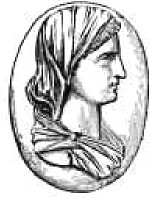Roman Emperor Constantine I convened the Council of Nicaea in 325 C.E., a pivotal moment in Christian history. However, what actually transpired at the Council remains a subject of debate. Some scholars argue that it initiated the process of establishing the biblical canon, while mainstream Christian tradition asserts that its primary purpose was to affirm Christ’s divinity without addressing the canon.
The Council of Nicaea was not solely concerned with Christ’s divinity or the biblical canon. Rather, it served as a political tool for Constantine to unify the Roman Empire through a standardized religious framework, blending elements of both Judaism and Christianity.
The discussion of Christ’s divinity at Nicaea necessitated addressing a more fundamental question: divine identity. When examining Christ’s nature, the Council had to clarify: divine in relation to whom? The opening of the Nicene Creed highlights this point. It first defines God the Father: “We believe in one God, the Father almighty, Maker of heaven and earth” [1], before addressing Christ’s relationship to Him: “And in one Lord Jesus Christ, the Son of God, the only-begotten, begotten of the Father before all ages” [1]. Establishing the identity of God the Father was a logical prerequisite for defining Christ’s relationship to Him.
The focus on the Arian controversy underscores this necessity. The debate was not about whether Christ was divine in an abstract sense but about His relationship to God the Father. Arius’ assertion that “There was a time when the Son was not” [2] raised the question: who is the God that Christ is the Son of? Resolving this issue required a clear definition of God the Father.
The Council’s use of the term ‘homoousios’ [1, 3] (of the same substance) to describe Christ’s relationship to God the Father further reinforced this necessity. By identifying God the Father as Yahweh of the Hebrew Bible and declaring Christ ‘homoousios’ with Him, the Council established a direct theological link between Christ and Yahweh. This was not an incidental byproduct of the discussion; it was integral to it. One cannot meaningfully assert that Christ is ‘of the same substance’ as another without first defining that other’s nature.
This theological clarification had profound implications. By explicitly identifying God the Father as Yahweh and declaring Christ to be of one substance with Him, the Council made questioning the connection between Christ and Yahweh impossible within mainstream Christianity. The affirmation of Christ’s divinity and the identification of God the Father with Yahweh became inseparably linked, making it logically untenable to accept one while rejecting the other within the Nicene framework.
The Council’s declaration that the Father of Jesus was Yahweh had several key effects [4, 5, 6]:
Theological Consolidation:
- Established a single orthodox view of God’s nature.
- Firmly connected Christian theology to Judaism.
- Created a framework where questioning the Hebrew Bible meant questioning Christ’s divinity.
Institutional Authority:
- Gave the Church the authority to define orthodox doctrine.
- Established mechanisms for identifying and excluding ‘heretical’ views.
- Set a precedent for future ecumenical councils.
Political Unity:
- Provided theological support for imperial cohesion.
- Standardized religious narratives across diverse regions.
- Marginalized alternative interpretations that could fracture the Roman Empire.
Doctrinal Impact:
- Made the Hebrew Bible essential to Christian theology.
- Framed Jesus’s divinity in relation to the Hebrew Bible.
- Suppressed interpretations that viewed Jesus as revealing a different God.
This decision fundamentally shaped Christian orthodoxy—not by directly establishing the biblical canon, but by definitively linking Jesus to the Hebrew Bible. This connection became central to mainstream Christian theology. Marcionite Christians recognize that Yahweh and the Lord Jesus Christ are incompatible, yet mainstream Christianity continues to overlook this contradiction through justification and tradition.
- First Council of Nicaea (325 CE). “The Nicene Creed.” In Tanner, Norman P., ed. Decrees of the Ecumenical Councils, Vol. 1 (1990)
- Athanasius. “Orations Against the Arians,” Book I, Chapter IX (c. 340 CE)
- Eusebius of Caesarea. “Letter to his Diocese.” In Socrates Scholasticus, Ecclesiastical History, Book I, Chapter 8 (c. 325 CE).
- Tertullian. “Against Marcion,” Book I (c. 208 CE).
- Justin Martyr. “First Apology,” Chapters 26-58 (c. 155 CE).
- Eusebius of Caesarea. “Life of Constantine,” Book III, Chapters 4-24 (c. 339 CE).


